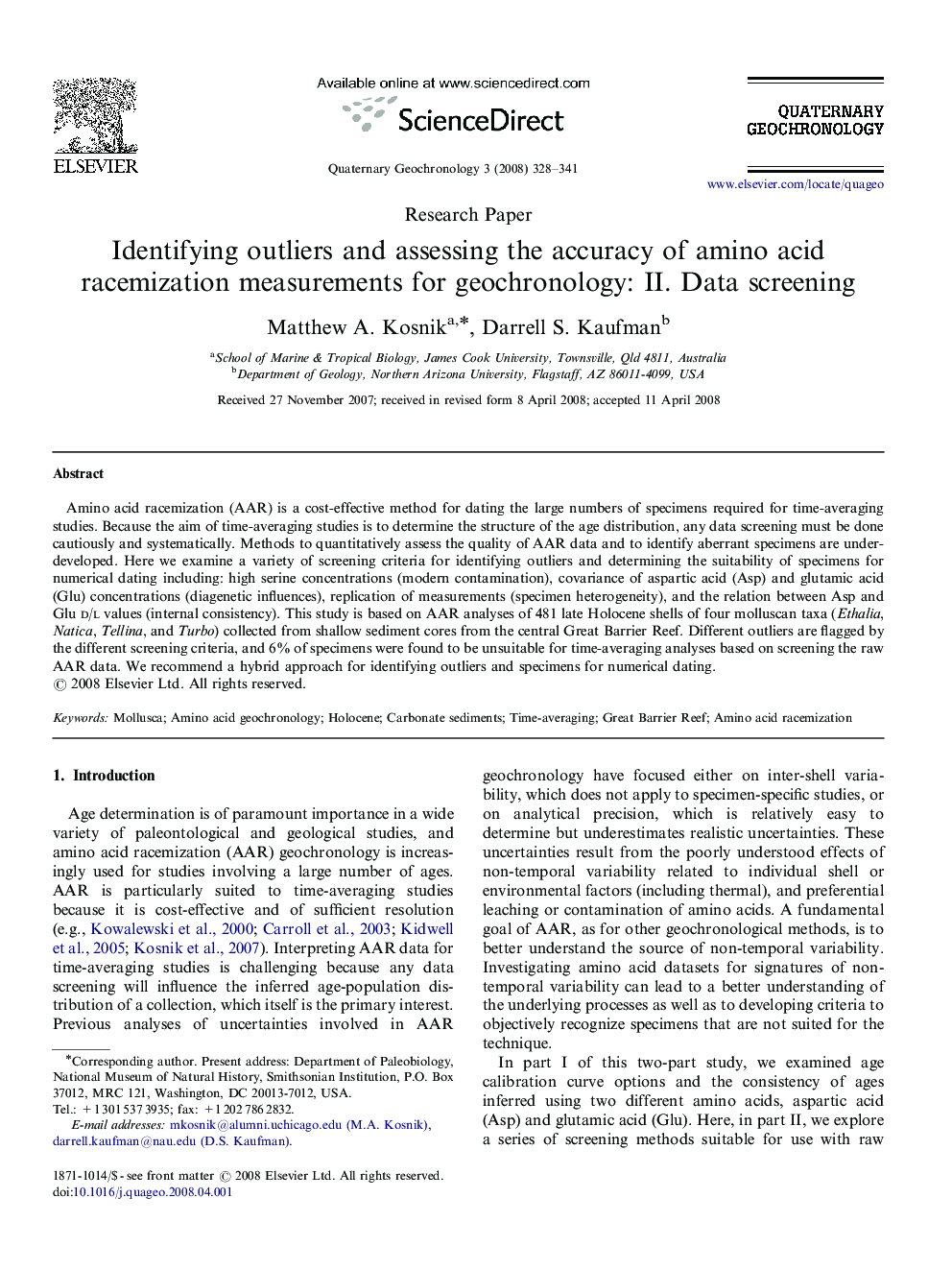| کد مقاله | کد نشریه | سال انتشار | مقاله انگلیسی | نسخه تمام متن |
|---|---|---|---|---|
| 4725567 | 1355990 | 2008 | 14 صفحه PDF | دانلود رایگان |

Amino acid racemization (AAR) is a cost-effective method for dating the large numbers of specimens required for time-averaging studies. Because the aim of time-averaging studies is to determine the structure of the age distribution, any data screening must be done cautiously and systematically. Methods to quantitatively assess the quality of AAR data and to identify aberrant specimens are under-developed. Here we examine a variety of screening criteria for identifying outliers and determining the suitability of specimens for numerical dating including: high serine concentrations (modern contamination), covariance of aspartic acid (Asp) and glutamic acid (Glu) concentrations (diagenetic influences), replication of measurements (specimen heterogeneity), and the relation between Asp and Glu d/l values (internal consistency). This study is based on AAR analyses of 481 late Holocene shells of four molluscan taxa (Ethalia, Natica, Tellina, and Turbo) collected from shallow sediment cores from the central Great Barrier Reef. Different outliers are flagged by the different screening criteria, and 6% of specimens were found to be unsuitable for time-averaging analyses based on screening the raw AAR data. We recommend a hybrid approach for identifying outliers and specimens for numerical dating.
Journal: Quaternary Geochronology - Volume 3, Issue 4, November 2008, Pages 328–341